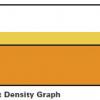|
|
Write a Blockbuster Using User Scenarios Big projects require many little user stories. But if these scenarios don't add up to one good story, then you're probably missing out on the big picture. In this week's column, Jeff Patton describes how his team weaves many small tales into a single strong report by identifying key characters and themes.
|
|
|
|
Using Mocks to Verify Interactions In the March 2006 issue of Better Software magazine, Dan North began a discussion of the evolution of behavior-driven development from test-driven development. Here, North continues the conversation with closer look at "mocks," utility classes that, for testing purposes, pretend to be some component or service with which your object will interact.
|
|
 |
Finish on Time by Managing Scale When deciding how a user's task is to be supported in our software, we often look at possible design solutions and select one that's best for the product and the user. As the project deadline approaches, however, we might choose to dismiss some features outright. In this column, Jeff Patton suggests we try keeping more features by adjusting their scale.
|
|
|
|
The Trouble with Tracing: Traceability Dissected Traceability! Some crave it. others cringe at the very mention of it. For hardcore configuration managers and requirements and systems engineers, it is a fundamental commandment of “responsible” software development. For many hardcore agilists and other developers, the very word evokes a strong “gag” reflex, along with feelings of pain and frustration. Traceability requires work and discipline! So how does traceability add value to our business and how can we make it easier?
|
|
|
|
Requirements-Based Development: A Software Configuration Management View It seems so obvious that we should develop systems based on requirements, and yet it turns out to be rather hard to do and thus many organizations are doing it very badly. From a software configuration management standpoint, we could perhaps leave the whole process of requirements engineering to one side and focus on the management of requirements and thus the aspects of change control and traceability. That would perhaps be unduly ducking the issue, and, of course, we can’t resist giving an opinion anyway!
|
|
|
|
Building a Requirements Foundation with Customer Interviews Whether you are building a brand new product or evolving an existing system, understanding the business needs of your customers is the foundation of a marketable product or valuable internal application. Few of us are experts in interviewing techniques, and few customers talk about their tasks, needs, and context in neat, concise statements about requirements. Hone your elicitation skills and learn what it takes to get beneath the surface and understand your customers: their world, how they work, and what really bothers them. With effective interviewing techniques and skills, you will get inside their heads and better understand their needs within their context.
|
Esther Derby, Esther Derby Associates Inc
|
|
|
Agile Software Development: The Home of 31 Flavors You've heard of eXtreme Programming (XP) and perhaps Scrum. How about Crystal Clear, Adaptive Software Development, Dynamic Systems Development Method, Rational Unified Process for Agile Development, and Feature Driven Development? These are some of the many variations of Agile development methods. Join Jeff McKenna as he explores the many flavors of Agile development methods and explains the similarities and differences. Find out what aspects of Agile development can help your organization’s development team in its particular environment. If you are considering Agile development and need to decide in which direction to go, this session is for you. Although a one-hour session cannot provide all the information you will need, you can explore what is common-the philosophy, the values, the characteristics-and what is different-the methods, the coverage, the costs-about different Agile approaches.
|
Jeff McKenna, Agile Action
|
|
|
The Case of the Missing IF Grandma cooked her roast a certain way, and now you're repeating the process without knowing why you have to trim the ends off an uncooked roast even though the pan is adequately sized. Relic processes in many organzations fall trap to this mindset since the reason behind the action lost its meaning long ago. Lee Copeland calls these "IF ..., THEN ..." processes. When the organization loses sight of the IF responsible for the action, then you're left with what Lee describes as "a process without a context; a rule without a reason."
|
|
 |
What Goes Up Must Come Down Writing requirements purely top-down or only bottom-up is risky to say the least. The devil's in the details, and those details are likely to be missed when working from a single direction. What if you could tackle your requirements from both directions by incorporating use cases and user centered design? Learn how balancing your approach to writing requirements can result in more detailed, pragmatic documentation.
|
|
 |
If the Shoe Doesn't Fit: Agile Requirements For Stepsister Projects Once upon a time there was an Agile requirements process and an ugly stepsister project. This might sound like the beginning of a fractured fairy tale, but it's a reality for many projects that don't fit the criteria for an efficient, effective requirements process. Language barriers, large teams, and tunnel vision are all things that can turn your project from Cinderella to stepsister. Find out how you can overcome these obstacles and get your team back to "happily ever after."
|
|

